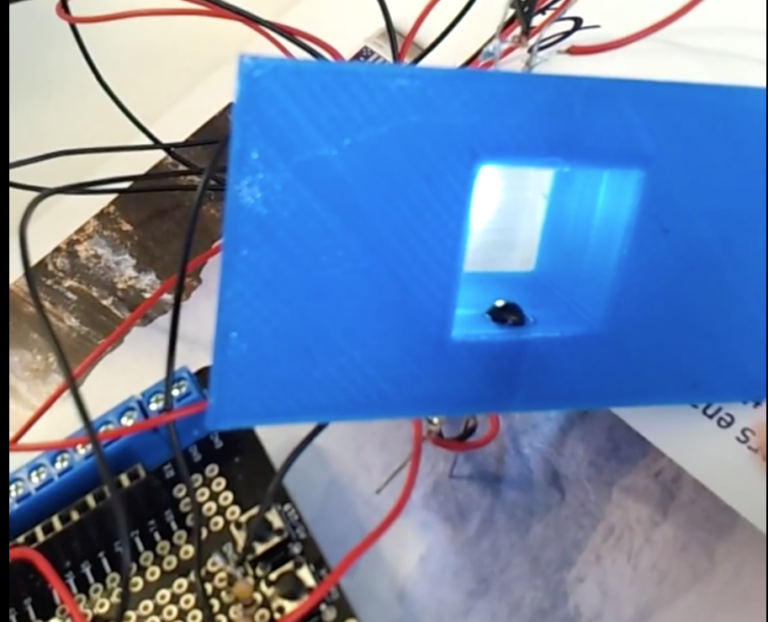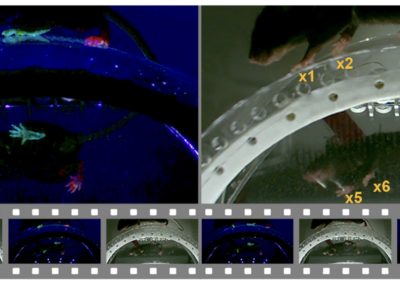;;Andre Chagas, creator of OpenNeuroscience, has generously shared the following with OpenBehavior regarding an arduino-based, 3D-printed nose poke device: “This nose poke device was built as “proof-of-principle”. The idea was to show that scientists too can leverage from the open source philosophy and the knowledge built by the community that is developing around open source hardware. Moreover, the bill of materials was kept simple and affordable. One device can be built for ~25 dollars and should take 2-3 hours to build, including the time to print parts. The device is organised as follows: The 3D printed frame (which can also be built with other materials when a printer is not available) contains a hole where the animals are expected to insert their snouts. At the front part of the hole, an infrared led is aligned with an infrared detector. This forms an “infrared curtain” at the hole’s entrance. If this curtain is interrupted, a signal is sent to a microcontroller (an Arduino in this case), and it can be used to trigger other electronic components, such as a water pump, or an led indicator, or in this case a Piezo buzzer. At the back of the hole, a white LED is placed to indicate that the system is active and ready for “nose pokes”. The microcontroller, contains the code responsible for controlling the electronic parts, and can easily be changed, as it is written for Arduino and several code examples/tutorials (for begginners and experts) can be found online.” This research tool was created by your colleagues. Please acknowledge the Principal Investigator, cite the article in which the tool was described, and include an RRID in the Materials and Methods of your future publications. Project portal RRID:SCR_021568; Software RRID:SCR_021608 Check out the Poke Device GitHub repository, which includes all the necessary files and detailed build instruction. Visit OpenNeuroscience to read more about this project. Get access to all the files necessary to build this device from FigShare!Nose Poke Device

Github for this project
Check out OpenNeuroscience
File downloads available here
Have questions? Send us an email!







